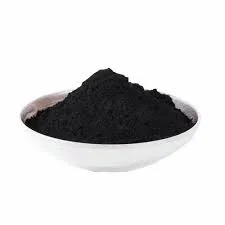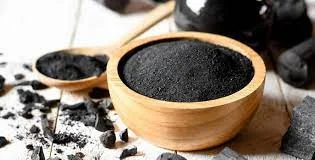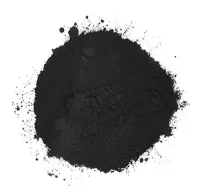The Guide to Activated Carbon Powder: What You Need to Know
Activated carbon powder is a versatile and essential material in various industries due to its exceptional adsorption capabilities. It is a form of carbon processed to have small, low-volume pores that increase the surface area available for adsorption or chemical reactions. This guide will delve into the intricacies of activated carbon powder, its production, applications, and benefits.
Introduction to Activated Carbon Powder
Activated carbon powder is derived from carbon-rich materials such as coal, wood, peat, or coconut shells. It is processed to create a highly porous structure that can trap and remove impurities from gases, liquids, and solids. The process involves two main steps: carbonization, which involves heating the raw material to remove volatile components, and activation, which introduces porosity through the use of chemicals or additional heating.

Production Process of Activated Carbon Powder
Raw Material Selection: The first step in producing activated carbon powder is selecting the appropriate raw material. Bituminous coal and anthracite are commonly used due to their high carbon content.
Carbonization: The raw material is heated to temperatures between 400°C and 900°C in the absence of air. This process drives off volatile components, leaving behind a carbon-rich material.
Activation: The partially carbonized material is then subjected to an activation process. This can involve chemical activation using substances like phosphoric acid or potassium hydroxide, or physical activation using steam or carbon dioxide.
Grinding: The activated carbon is then ground into a fine powder to increase its surface area and adsorption capacity.
Sieving: The powder is sieved to ensure a consistent particle size, which is crucial for its performance in various applications.
Advantages of the Activated Carbon Powder
Wide Application Range: Activated carbon powder is used across a broad spectrum of industries, including water treatment, air purification, food processing, pharmaceuticals, and more.
Strong Decolorization Ability: It can decolorize a variety of products, turning them from various colors to a transparent state.
Versatile pH Tolerance: It operates effectively within a pH range of 5 to 9, with minimal impact on the pH and alkalinity of treated water.
Applications of the Activated Carbon Powder
Water Treatment: Activated carbon powder is used to treat wastewater from industries like printing, dyeing, and electroplating. It adsorbs harmful substances such as odors, chlorine, phenol, mercury, lead, arsenic, and cyanide.
Decolorization: It is used in the decolorization of chemical raw materials and pharmaceutical intermediates, including the decolorization of iodine (KI).
Moisture Absorption: Activated carbon is used in heating pads and warmers for babies to absorb moisture and maintain a dry environment.
Dioxin Adsorption: It is suitable for adsorbing dioxins in waste incineration power plants, helping to reduce harmful emissions.

Packaging and Storage
Activated carbon powder is typically packaged in 25kg bags with an outer woven layer and an inner plastic lining. This packaging protects the powder from moisture and contamination, ensuring its effectiveness.
Environmental Benefits
Activated carbon powder plays a crucial role in environmental protection by helping to clean up contaminated water and air. It can reduce the levels of harmful substances in industrial waste, making it safer for release back into the environment.
Economic Considerations
Despite the initial cost of activated carbon powder, its long-term benefits often outweigh the expense. It is a cost-effective solution for industries that require high levels of purification or decolorization.
Regulatory Considerations
The use of activated carbon powder is regulated in some regions to ensure it is used safely and effectively. It is essential for industries using activated carbon to comply with local environmental regulations.

Conclusion
Activated carbon powder is a powerful tool in the fight against pollution and contamination. Its ability to adsorb a wide range of contaminants makes it indispensable in many industries. Understanding the production process, applications, and benefits of activated carbon powder is crucial for anyone working in these fields.
The Role of Activated Carbon Powder in Chemical Spill Cleanup
- Art
- Causes
- Crafts
- Dance
- Drinks
- Film
- Fitness
- Food
- Games
- Gardening
- Health
- Home
- Literature
- Music
- Networking
- Other
- Party
- Religion
- Shopping
- Sports
- Theater
- Wellness


